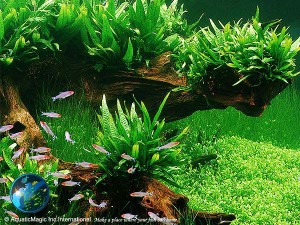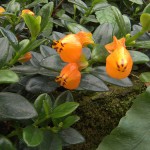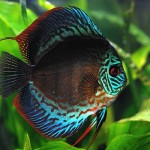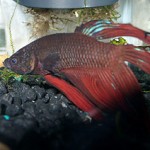A planted aquarium can be a beautiful thing, but in order to make your underwater garden look good and thrive, it’s important to understand the differences in the available plants. There are five types of plants, divided by the way they grow. Each requires a particular planting method.
Bulbs
There are some beautiful flowering aquatic plants that grow from bulbs. Unfortunately, they are frequently too large for an indoor aquarium and are often used in outdoor setups such as koi ponds.
Examples: Water Lily, Aponogeton
Planting: The bulb should be planted only halfway into the substrate, with the top half exposed. Bulbs can be separated when they get large and used to spread the plant into other areas.
Floating
These plants actually float in the aquarium rather than stay rooted in place. A lot of moss and fern-type plants fall into this category. Floating plants are particularly useful in aquariums with very shy fish that like to hide and in breeding tanks where fry need protection. Because they cover the water surface, these plants can also create low light conditions where needed by shading the area beneath them.
Examples: Fairy Moss, Riccia
Planting: Not planted. Simply allow to float on the surface of the aquarium water.
Rhizomes
Plants in this category typically have a thick, horizontal stem from which leaves sprout on the top and roots on the bottom. The roots may grow in the aquarium substrate or may attach to driftwood or other furnishings in the tank. The rhizome spreads as a runner over the surface of the substrate, growing new sections of leaf and root along the way.
Examples: Anubias, African Fern
Planting: Tie to driftwood or dig a hole in the substrate and plant only the roots, not the rhizome.
Rosettes
This type of plant forms a crown with roots growing beneath and leaves growing above. Rosettes spread by sending out runners and growing new plants along the way, similar to the way strawberries spread. Many rosettes will produce flowers as well.
Examples: Amazon Sword, Sagittaria
Planting: Depends on the plant. Some do better if the crown is exposed above the substrate, while others need the crown covered by the substrate.
Stems
This type of plant has leaves growing on what is usually a single stem, with the end rooted in the substrate. Leaves may be single, paired, or multiple, growing from nodes along the stem. Some grow leaves from every node, others from opposite and alternating side nodes. These are sometimes referred to as bunched plants because they are sold with several stems in a bunch. Most stem plants will grow very quickly and must be trimmed so they don’t take over the aquarium. They spread when you take cuttings, let them root, then plant them as new stems.
Examples: Ludwigia, Pennywort
Planting: Dig into the substrate and cover the roots, making sure that the stem is not planted deeply—stems tend to do better when they are planted at a shallow depth. Plant far enough apart that light will filter down to the lowest leaves.

















Leave a Reply